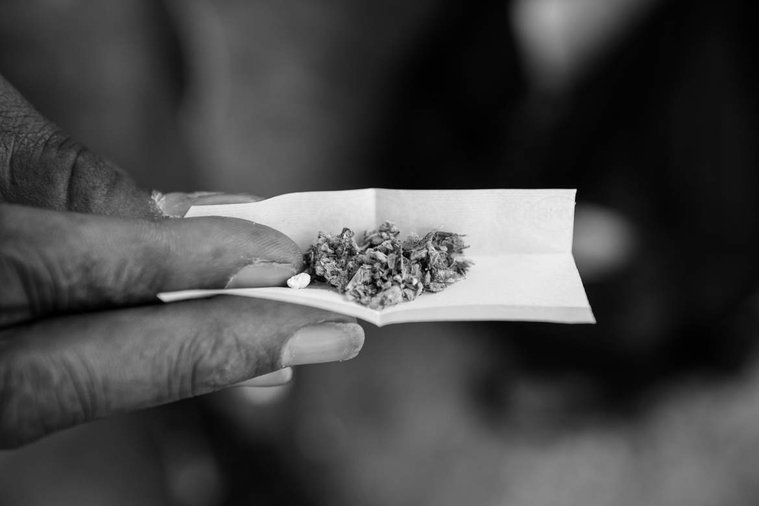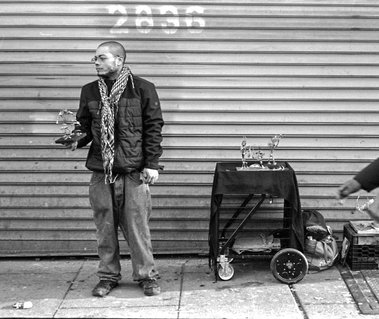K2 Synthetic Marijuana
Despite unknown health effects, K2, a new drug, grows in popularity for low income New Yorkers
By Edwin J. Torres
Buyers outside of the 149th street Deli in the Bronx call it “K” while others call it “Diablo” or “Jolly Green Giant.”
For Carlos Santiago, 27, it was simply called K2, something he smoked to get high while trying to make a few dollars selling his wire sculptures on street corners. Carlos originally came to the U.S. from Puerto Rico to find work in 2007, but with the advent of the economic depression he was unable to find work and eventually fell into the streets and became addicted to drugs.
In the last year, he fought off his severe addictions by visiting narco freedom clinics and turned to art as a way to build constructively. Despite progress, he turns to K2 as a last resort drug.
Above: A man high on K2 lays in front of an emergency room in Brooklyn.
K2, is known to be a blend of chemically sprayed herbs that can be smoked and is said to produce a high stronger than marijuana. Researchers have found that it does not contain, THC, the active chemical found in marijuana, but instead is made with a chemical called JWH-018/ JWH-073, which stimulates the brains’ cannabinoid receptors and in turn inducing a feeling of euphoria. K2 is a popular drug because up until 2015 it was easily accessible in stores.
In the Bronx and throughout New York City, packets of K2 could be purchased for as little as $4.99 in delis or tobacco shops. Prices that are lower than the cost of a pack of cigarettes sold for $13.00. K2 is sold as an incense and marked “Not for Human consumption.” The packets are decorated with images of cartoons who appear to be under the influence. One particular brand of K2 called “Geeked Up” showcases an image of Spongebob Squarepants with intense red eyes and a thick pair of eyeglasses. Unlike tobacco which restricts the age of consumers, K2 has no age restrictions and could be purchased by anyone, including our youth.
Left: A store owner collects cash for a pack of K2 in the South Bronx in 2014.
Right: A homeless couple gets high in the East Village in New York City in 2014.
One of the major concerns regarding K2 is that long-term health effects of this drug are unknown. According to sources at CNN, studies have found that the short-term effects of K2 include a strong high, increased heart rates, loss of consciousness, paranoia, hallucinations and psychotic episodes. The long-term effects are yet to be identified.
Carlos Santiago a frequent user of K2 says, “This is scary because in the end we don’t know what we are putting into our bodies.” Carlos reports that just after a year of smoking synthetic marijuana, he suffers from severe unpredictable coughs, increase in flem, and headaches. In addition, he explains that when he stopped smoking K2 his body entered an intense phase of withdrawal, resulting in migraines and mood swings. However, when he smokes too much K2 he faces the risk of losing consciousness.
Still these detrimental health effects do not deter Carlos and many others from purchasing K2. For many living on just enough to get by, it seems reasonable to smoke something that is cheap and legal. One impassioned preacher on a New York City subway train is wary of the drug and regards it as “The new crack epidemic killing todays youth and poor.”
Carlos acknowledges the negative health effects of K2 and comments “I am going through a lot right now, living in a shelter, not having a job. K2 is cheap and it helps me numb the struggle. My goal is to save money and be done with all of this.” Despite not wanting to use this drug, Carlos sees it as one of the only options he has in coping with poverty and homelessness. This cheap and accessible drug may have larger implications than one may realize.











